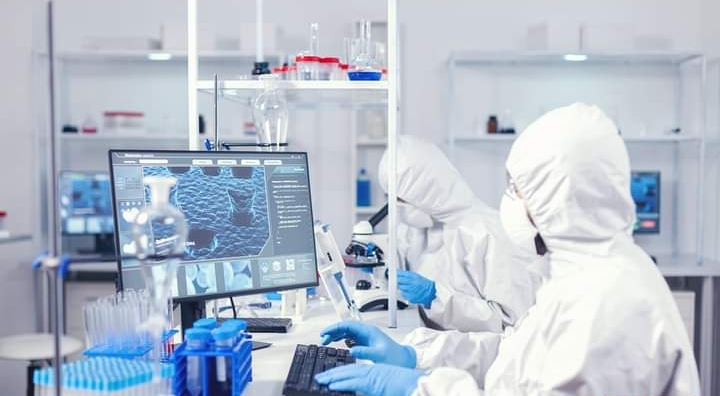Medicine and health sciences, like many other fields of science, are advancing with time. New ideas are being established about various unknown parts of the human body, old ideas are changing.
The advances in medicine that we are enjoying today did not happen overnight. Rather, modern medicine is based on the new inventions, improvements and discoveries that happen year after year.
The year 2023 will see several major breakthroughs in medicine, health, biology and neuroscience. Among them, 3 successful studies have been discussed in this article.
1. How we distinguish between fantasy and reality
How do we distinguish between fantasy and reality? Many attempts have been made to answer this question in literature and film history. However, as a result of a study this year, scientists have gained a clearer understanding of the mysterious side of the human brain.
Of course, scientists have been trying this for more than a hundred years.
At the beginning of the 20th century, psychologist Mary Parkey was trying to establish a scientific definition of how people imagine. For this purpose he conducted a study in 1910. Some surprising results emerge from this study.
The research was primarily conducted on human participants. Participants were placed in front of a blank screen and asked to think of a specific fruit. On the other hand, a screen in front of them shows a very vague picture of the same fruit for a short time.
At the end of the experiment, participants were asked if they had actually seen anything. All replied that they did not see anything. However, everyone has their own opinion on how clear the picture of the fruit imagined in their mind was.
Marie Parkey concluded that, when reality matches a fantasy image, we usually assume it was our imagination. In psychology, such a phenomenon is called the “parky effect”.
Since 1910, scientists from different parts of the world have tried to do Mary Parky’s research in their own way. However, some of these studies have found evidence of the Parkey effect, while others have not.
However, ‘neuroimaging’ technology has come a long way in the past few decades to monitor the brain. And various studies have shown through neuroimaging, when our brain imagines something and when we see it with our eyes, the same part of the brain becomes active.
A study conducted this year has made it even clearer how our brain works during imagination. Researchers at University College London conducted the study in a similar manner to Mary Parkey. However, to facilitate the measurement, participants standing in front of a blank screen were asked to think of a diagonal line instead of being asked to think of an object.
Similar to Mary Parkey’s study, some participants in this study were shown vaguely diagonal lines on a screen in front of them. Again, nothing is shown on the screen in front of some people.
Those who were shown the diagonal line, at the end of the test, reported seeing the diagonal line on the screen. On the other hand, many of those who were not shown the diagonal line reported seeing the diagonal line on the screen.
That is, there was no evidence of the Parkey effect in this study. Rather, Mary Parkey’s decision proved the opposite. Researchers have concluded that when imagining something deeply, we can mistake it for reality.
The researchers also observed the brains of the people who participated in their study through neuroimaging. From their observations, they hypothesize that the ‘prefrontal cortex’ in the front of our brain and the ‘visual cortex’ in the back are used to separate imagination from reality.
Nadine Dykstra, the lead researcher of the study, said that this research will help people with diseases such as schizophrenia or Parkinson’s to understand the brain function.
2. Gaining new insights into how the microbiome spreads
There are about 70 trillion cells in our body. But only about half of these cells are actually part of our body. The other half of the cells are actually microbes living inside our bodies.
We depend on billions of microbes to survive. These microbes help us in many ways. For example, the microbes inside the body protect us from the attack of harmful microbes outside. It also helps in food digestion or making vitamins.
These microbes are called the ‘microbiome’.
But scientists still don’t have a clear understanding of exactly how the microbiome works.
Because researching the microbiome is challenging. A human body’s microbiome contains millions of species of microbes. Each of these microbial species has a different body genome, a different way of working, and each has a different relationship with the human body.
Therefore, it is very difficult to breed these microbes outside the human body in the lab.
Another reason that researching the microbiome is difficult is that these microbes are constantly changing. Every baby is born with a specific microbiome from its mother. But the microbiome in each of our bodies has been constantly changing ever since we were born.
Many microbes are leaving our body, and many are entering our body.
Researchers have long been trying to understand how different microbes enter the body as part of our microbiome.
In particular, the researchers were not sure whether the microbiome spreads from one person’s body to another in the same way as an infectious agent. But this picture has changed in 2023.
Researchers at the University of Trento in Italy conducted a major study this year to understand the workings of the microbiome. They have tried to understand the genetic changes that occur in the microbiome when it is transferred from one human body to another.
However, the microbiome in different parts of the world works in different ways. Because the food habits and lifestyle of people in different regions are different. For this reason, researchers of the University of Trento have collected more than 9 thousand samples from the bodies of citizens of 30 countries for research.
They then extracted the DNA sequences of all the samples collected. However, identifying patterns of microbiome activity from DNA sequence data has been a difficult task for them.
What is clear from this research, however, is that the exchange of microbiome microbes from the bodies of the people living around us to our own is much greater. At least before this there was no research evidence for scientists.
This research has proven that the microbiome can easily spread from one family member or roommate to another. And this is not harmful, but necessary for our body.
That is, the nature of our microbiome depends on how we interact with each other.
Another thing researchers have come to a conclusion is related to the way we live in modern times. The amount of antibiotics we consume today and the amount of antiseptics we use are, in many cases, creating problems for our microbiome.
In addition, researchers believe that the microbiome contributes to various diseases such as cancer, multiple sclerosis or diabetes.
3. Discover new functions of mitochondria
Humans have many similarities with other vertebrates and mammals. Let’s take the mouse. Almost all of the genes in mice function in the same way as human genes.
Even distinguishing mouse and human embryos is quite difficult. Mice and humans look very similar in the embryonic stage. But as fast as a rat grows in the womb, a human baby does not grow as fast.
There are several stages or stages in the development from embryo to complete organism. And it usually takes 2 to 3 times longer for human embryos to go through each stage than mice.
In this way, everything depends on the structure or behavior of the animal, depending on how much time it takes for any animal to develop from the embryonic stage to birth.
But until now, researchers did not have an idea about what exactly causes the time manipulation for the development of different animals. A 2023 study found the reason for this. And the reason is the most familiar part of the cell, the mitochondria.
Mitochondria are commonly known as the power-house of a cell. That is, all the energy needed to run the cell comes from the mitochondria. And that was thought to be the main function of mitochondria.
But researchers at Harvard Medical School discovered new functions of mitochondria this year. And according to researchers, mitochondria play a role in determining how long it takes for an animal to develop from the embryonic stage.
A few weeks after this discovery by researchers at Harvard Medical School, a group of researchers in Belgium also found similar results. However, Belgian researchers have studied a slightly different subject.
Their research shows that the time it takes for the nervous system to form in the embryo is determined by the activity of the mitochondria.
These two studies are expected to make major contributions to cell therapy and cancer research.
Medicine, Science, Research





